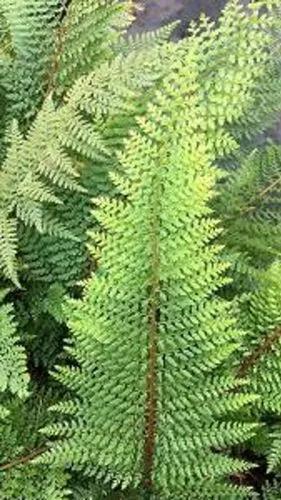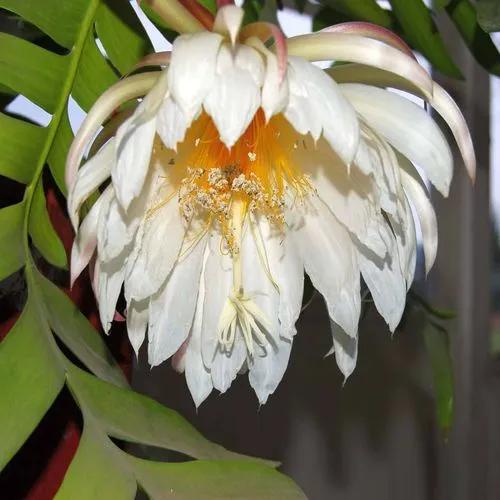Davallia canariensis, the hare's-foot fern, is a species of fern in the family Davalliaceae. It is a spreading, deciduous fern with thick, scaly rhizomes and broad, finely-divided fronds, it grows up to 50 cm tall and 100 cm broad.
Deer-foot fern Care
Davallia canariensis



Davallia canariensis, commonly known as hare’s foot fern, Canary Island hare’s foot fern, or deer’s foot fern, is an epiphytic evergreen fern with triangular fronds that spread to as much as 20” long on brown scaly-covered rhizomes covered with a fine mat of hairs. This fern is native to the western Mediterranean from southwestern Europe to Northwestern Africa and west in the Atlantic Ocean to the Canary Islands off Morocco. In the wild, it grows well on tree bark or along rocky surfaces. Fronds grow to 1.5’ long to 1’ wide. Each frond will divide to 3 or 4 pinnae which subdivide into many pinnules. The fuzzy ground-level rhizomes reportedly resemble animal feet, hence the “foot fern” part of the common name. Genus name honors Edmond Davall (1763-1798), Swiss botanist of English origin. Specific epithet means of the Canary Islands.
How to Care for the Plant

Water

Deer ferns prefer regular watering to maintain moist soil. However, allowing a soil to dry before watering stresses these plants. When it comes to fertilizing, feed a plant once in a month, except for in a winter season. Apply an all-purpose liquid house plant food to ensure a optimum growth of a plant.

Pruning

It is important because damaged leaves and stems can actually be an energy drain on your plant. By removing those dead parts, you're taking some of that work off your plant’s plate and allowing it to divert its energy into healthy leaves and new growth!

Fertilizer

Simply apply the fertilizer around the base of the plant, extending to the drip line. For vegetables, place the fertilizer in a strip parallel to the planting row. Water-soluble fertilizers are faster acting but must be applied more frequently. This method gives plants food while you water.

Sunlight

Needs bright, indirect sunlight.

Soil

Loamy soil, a relatively even mix of sand, silt, and clay, feels fine-textured and slightly damp. It has ideal characteristics for gardening, lawns, and shrubs. Loamy soil has great structure, adequate drainage, is moisture-retaining, full of nutrients, easily cultivated and it warms up quickly in spring, but doesn't dry out quickly in summer.

Temperature

This is a tropical plant that dislikes temperatures that dip below 50°F. It is considered hardy in the areas with the lowest winter temperatures of +1.7°C (35°F).

Container

Here’s a handy guideline: increase pot size by 2.5-5 cm (1 to 2 inches) in diameter for plants that are growing in pots 25.4 cm (10 inches) in diameter or less. For larger plants, those growing in pots greater than 10 inches in diameter, increase the pot size by 5 or 7.62 cm (2 or 3 inches) in diameter.

Additional

All ferns love moisture and should be given humid conditions. In living rooms and family rooms, stand their pots on trays of damp pebbles or clay granules. Ferns also love being misted at regular intervals with tepid, soft water unless the humidity of the whole room is kept high through the use of a humidifier.

Popularity

8,728 people already have this plant 1,026 people have added this plant to their wishlists
Discover more plants with the list below
Popular articles






